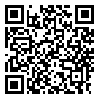Volume 25, Issue 2 (Avicenna Journal of Clinical Medicine-Summer 2018)
Avicenna J Clin Med 2018, 25(2): 92-98 |
Back to browse issues page
Download citation:
BibTeX | RIS | EndNote | Medlars | ProCite | Reference Manager | RefWorks
Send citation to:



BibTeX | RIS | EndNote | Medlars | ProCite | Reference Manager | RefWorks
Send citation to:
Razavi Z, Pouya P, Seifrabiei M A, Sabzehei M K. Evaluation of Blood Glucose Control Using HbA1c before and after Four Injections of Insulin Analogues in Children with Diabetes Mellitus Type 1. Avicenna J Clin Med 2018; 25 (2) :92-98
URL: http://sjh.umsha.ac.ir/article-1-1751-en.html
URL: http://sjh.umsha.ac.ir/article-1-1751-en.html
1- Associate Professor, Department of Pediatrics, School of Medicine, Hamadan University of Medical Sciences, Hamadan, Iran , razavizahra@yahoo.com.au
Abstract: (6698 Views)
Background and Objective: Acceptable control of blood glucose is one of the most important goals of treatment management in diabetic children. An insulin therapy regimen with multiple daily injection or continuous subcutaneous insulin infusion has been admitted as a desirable therapeutic approach in children with diabetes mellitus type 1. This study was designed to evaluate the effect of intensive insulin therapy on HbA1c as an alternative for the conventional two-injection insulin therapy.
Materials and Methods: This descriptive-cross sectional study was conducted on 100 children and adolescents with diabetes mellitus type 1 at Pediatric Endocrinology Outpatient Clinic of Besat Hospital, Hamadan, Iran in 2017. The present study was conducted on the patients that were previously treated with twice-daily NPH and regular insulin, and then with four injections of insulin Aspart per day before each meal and insulin Glargine at bedtime. Demographic data included: age of onset of diabetes, weight, height, body mass index, duration of diabetes, number of hypoglycemic events, number of episodes of diabetic ketoacidosis (a year before and after the change of insulin regimen), number of insulin injections, type of insulin, injection device, and mean of HbA1c (a year before and after the change of insulin regimen). The data were analyzed using SPSS software (version 16) and appropriate statistical tests.
Results: The mean age of the patients was 11.41 years. Out of 100 subjects, 60 cases (60%) were female and 75% were male. In addition, 75% and 25% of the cases were urban and rural, respectively. The average body mass index was 19.65. The average number of visits to the clinic and measurement of HbA1c were 3.33 times a year. The mean of HbA1c before and after four injections per day was 8.4 and 8.1, respectively. There was a statistically significant difference (P= 0.03). The mean reduction was significant (P= 0.001) in subjects that were referred to the clinic and performed HbA1c more than three times a year. The frequency of reported hypoglycemia was 1.4 each year and the difference was not statically significant .There were no differences in terms of hypoglycemia events before and after four injections per day.
Conclusion: The findings of this study confirmed that multiple daily injection of insulin is associated with improved metabolic control of blood glucose. However, HbA1c levels were not in the range of good control.
Materials and Methods: This descriptive-cross sectional study was conducted on 100 children and adolescents with diabetes mellitus type 1 at Pediatric Endocrinology Outpatient Clinic of Besat Hospital, Hamadan, Iran in 2017. The present study was conducted on the patients that were previously treated with twice-daily NPH and regular insulin, and then with four injections of insulin Aspart per day before each meal and insulin Glargine at bedtime. Demographic data included: age of onset of diabetes, weight, height, body mass index, duration of diabetes, number of hypoglycemic events, number of episodes of diabetic ketoacidosis (a year before and after the change of insulin regimen), number of insulin injections, type of insulin, injection device, and mean of HbA1c (a year before and after the change of insulin regimen). The data were analyzed using SPSS software (version 16) and appropriate statistical tests.
Results: The mean age of the patients was 11.41 years. Out of 100 subjects, 60 cases (60%) were female and 75% were male. In addition, 75% and 25% of the cases were urban and rural, respectively. The average body mass index was 19.65. The average number of visits to the clinic and measurement of HbA1c were 3.33 times a year. The mean of HbA1c before and after four injections per day was 8.4 and 8.1, respectively. There was a statistically significant difference (P= 0.03). The mean reduction was significant (P= 0.001) in subjects that were referred to the clinic and performed HbA1c more than three times a year. The frequency of reported hypoglycemia was 1.4 each year and the difference was not statically significant .There were no differences in terms of hypoglycemia events before and after four injections per day.
Conclusion: The findings of this study confirmed that multiple daily injection of insulin is associated with improved metabolic control of blood glucose. However, HbA1c levels were not in the range of good control.
Type of Study: Original |
Subject:
Other Clinical Specialties
Send email to the article author
| Rights and permissions | |
 |
This work is licensed under a Creative Commons Attribution-NonCommercial 4.0 International License. |







